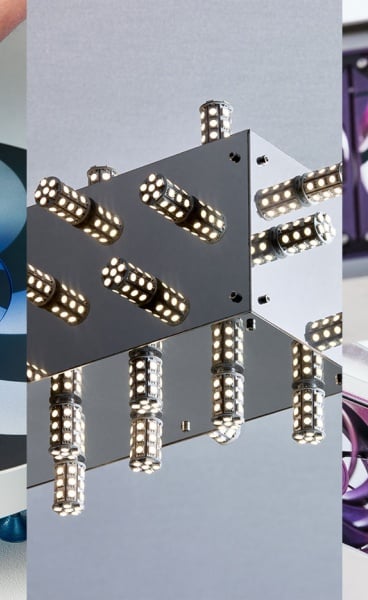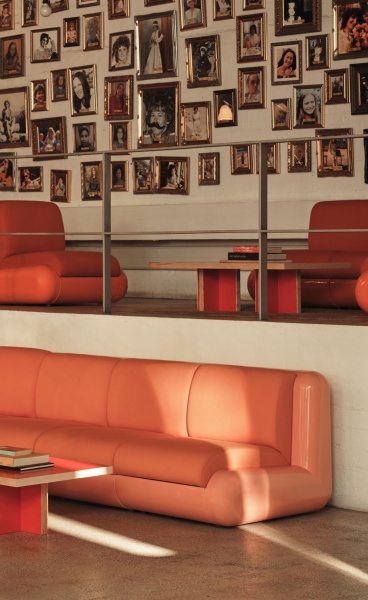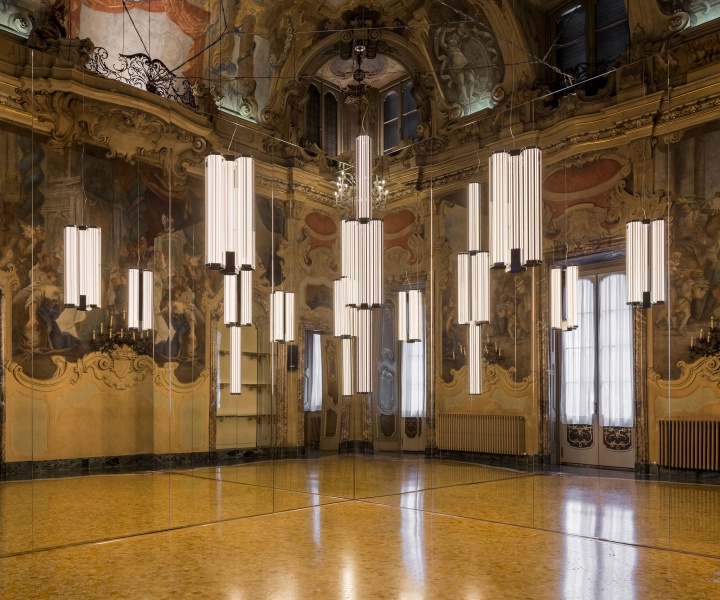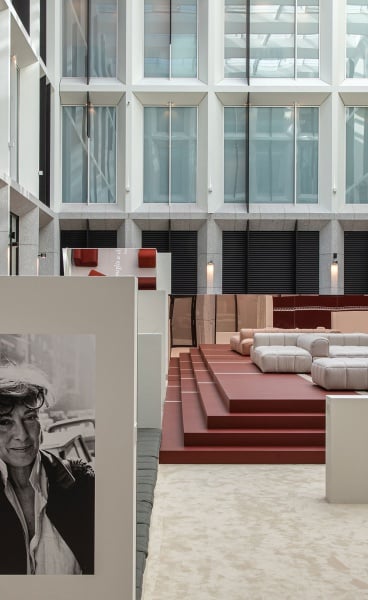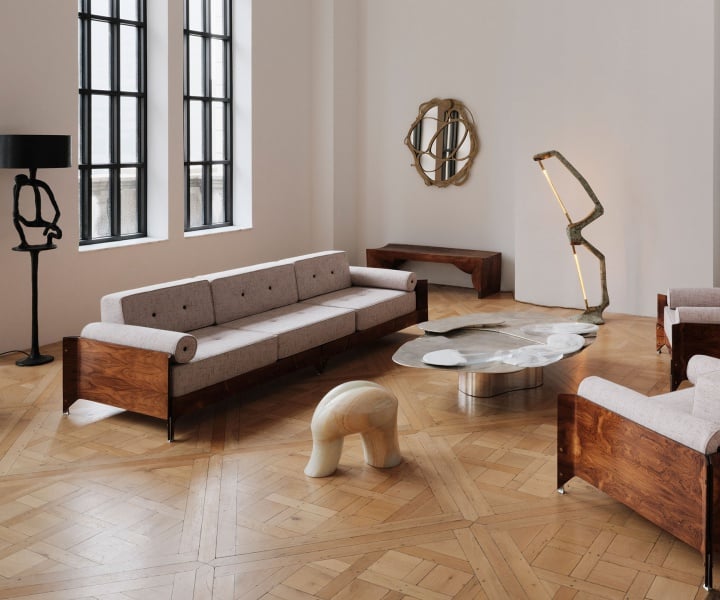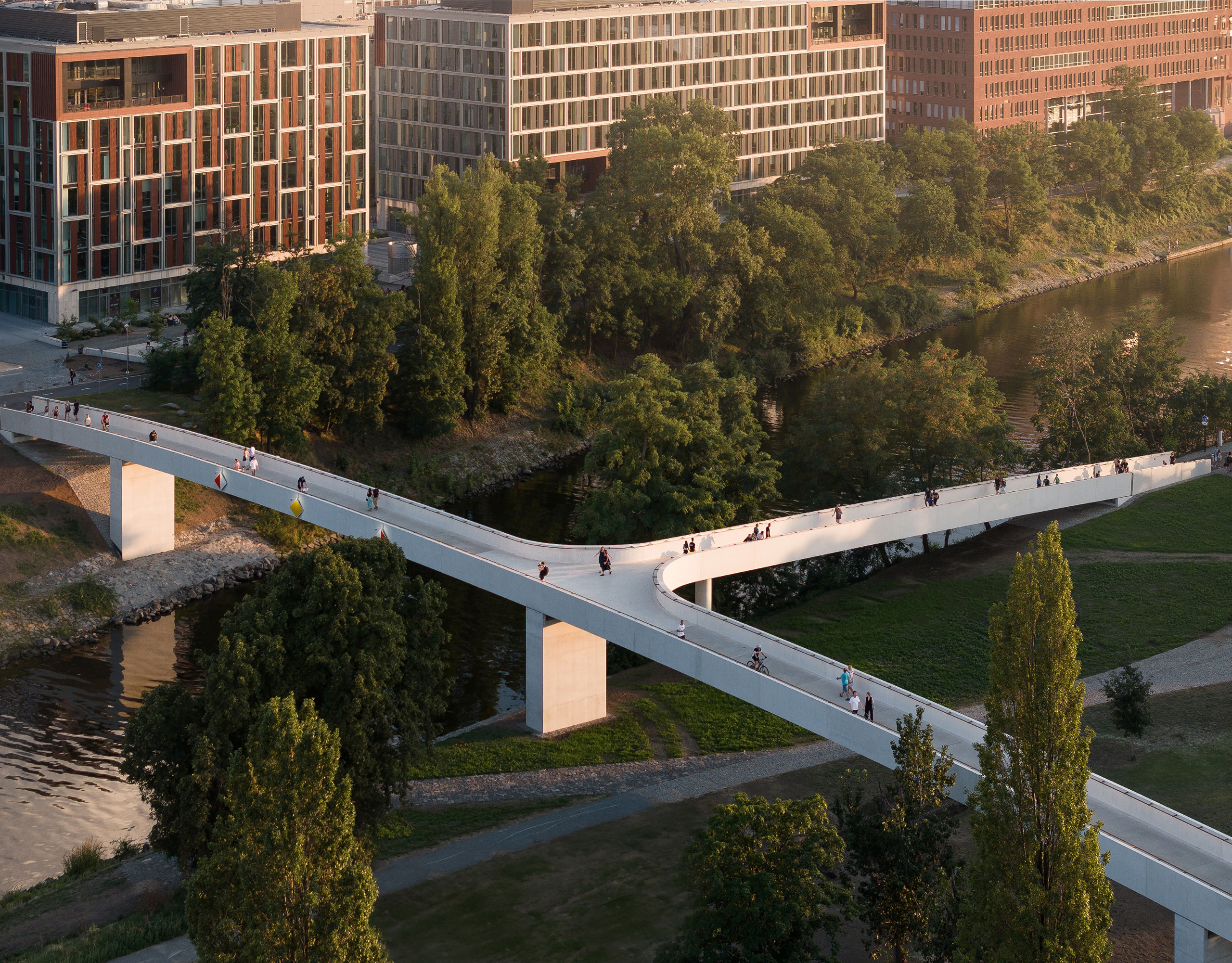
Photography by Alex Shoots Buildings.
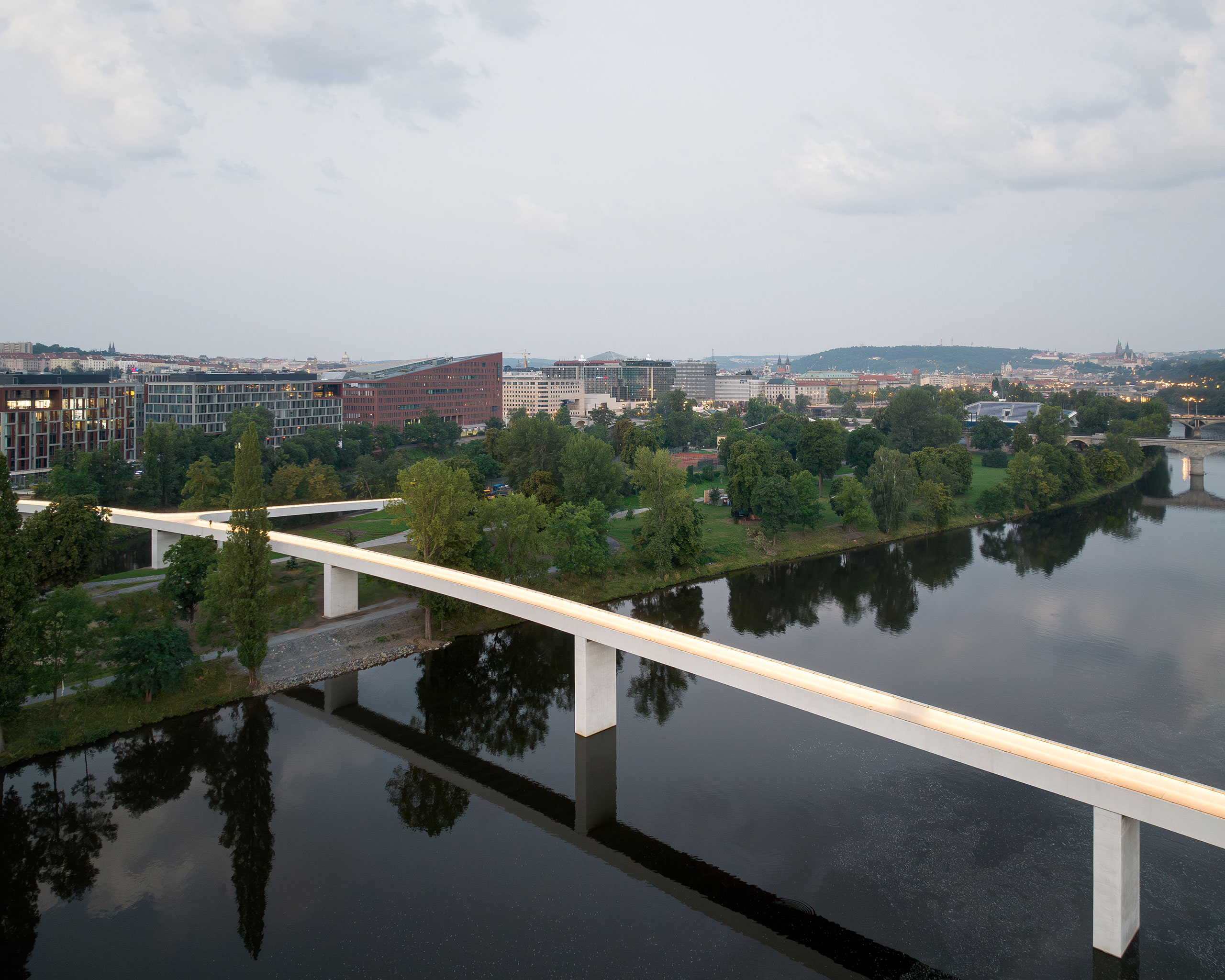
Photography by Alex Shoots Buildings.
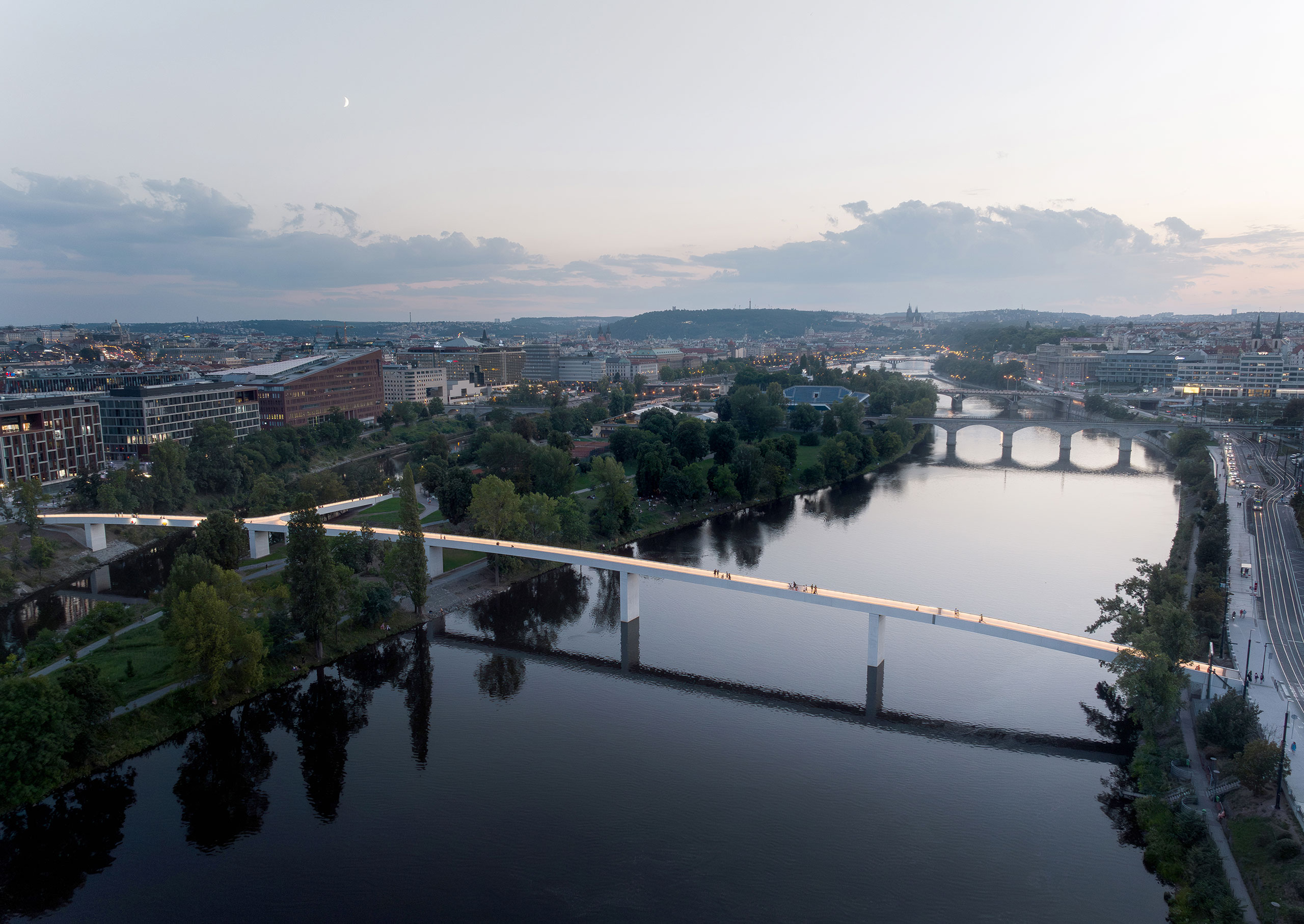
Photography by Alex Shoots Buildings.
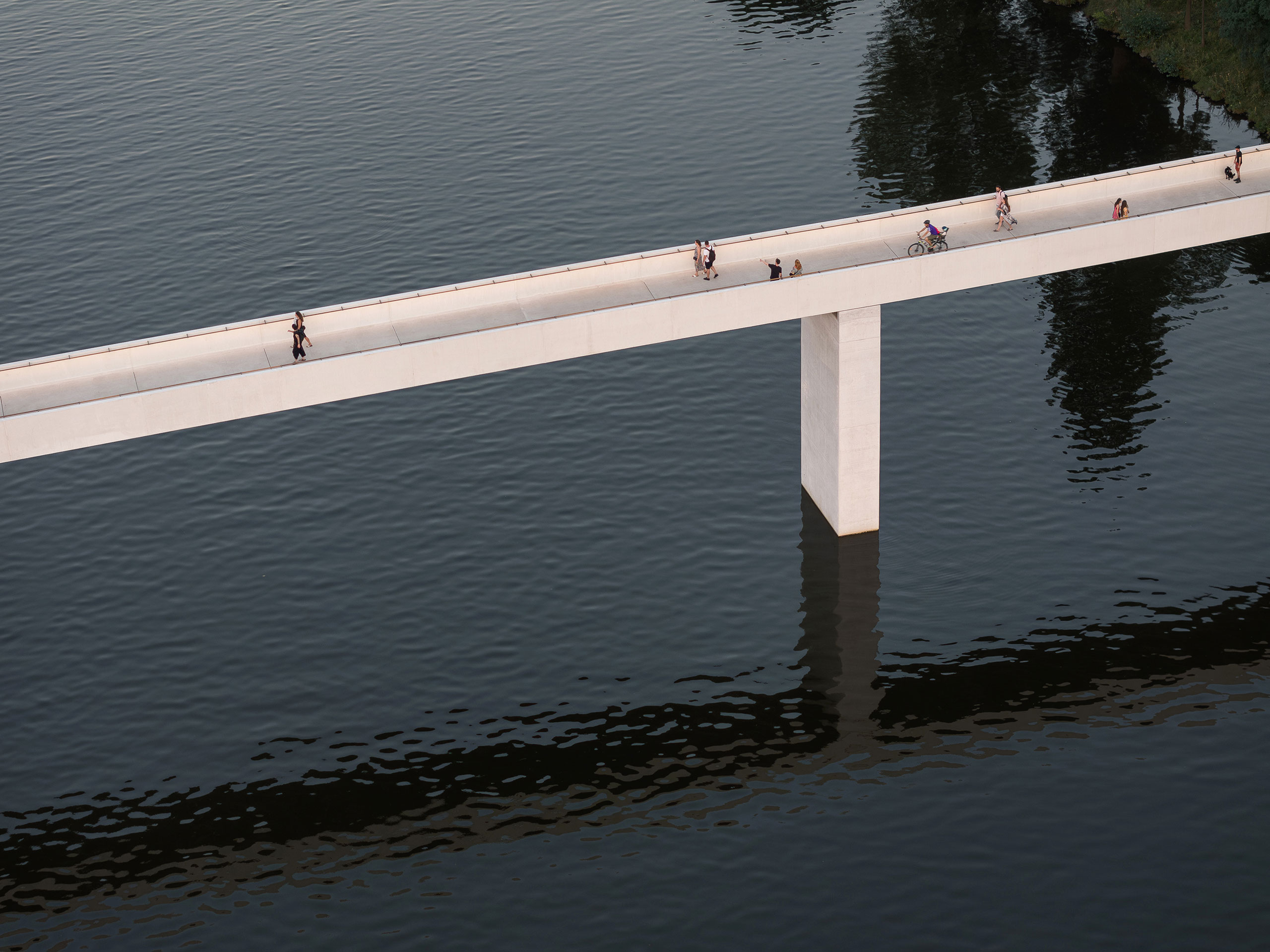
Photography by Alex Shoots Buildings.
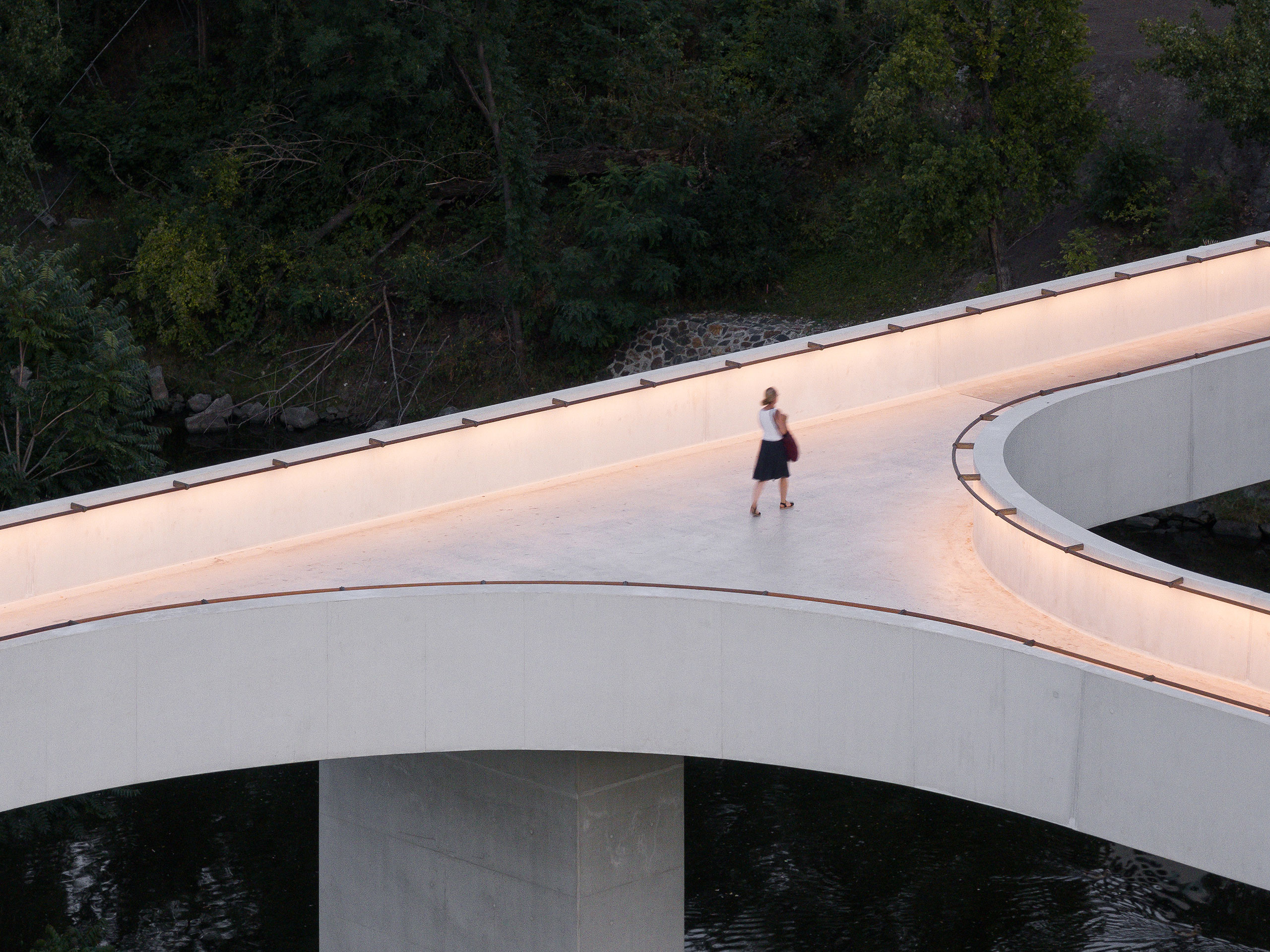
Photography by Alex Shoots Buildings.
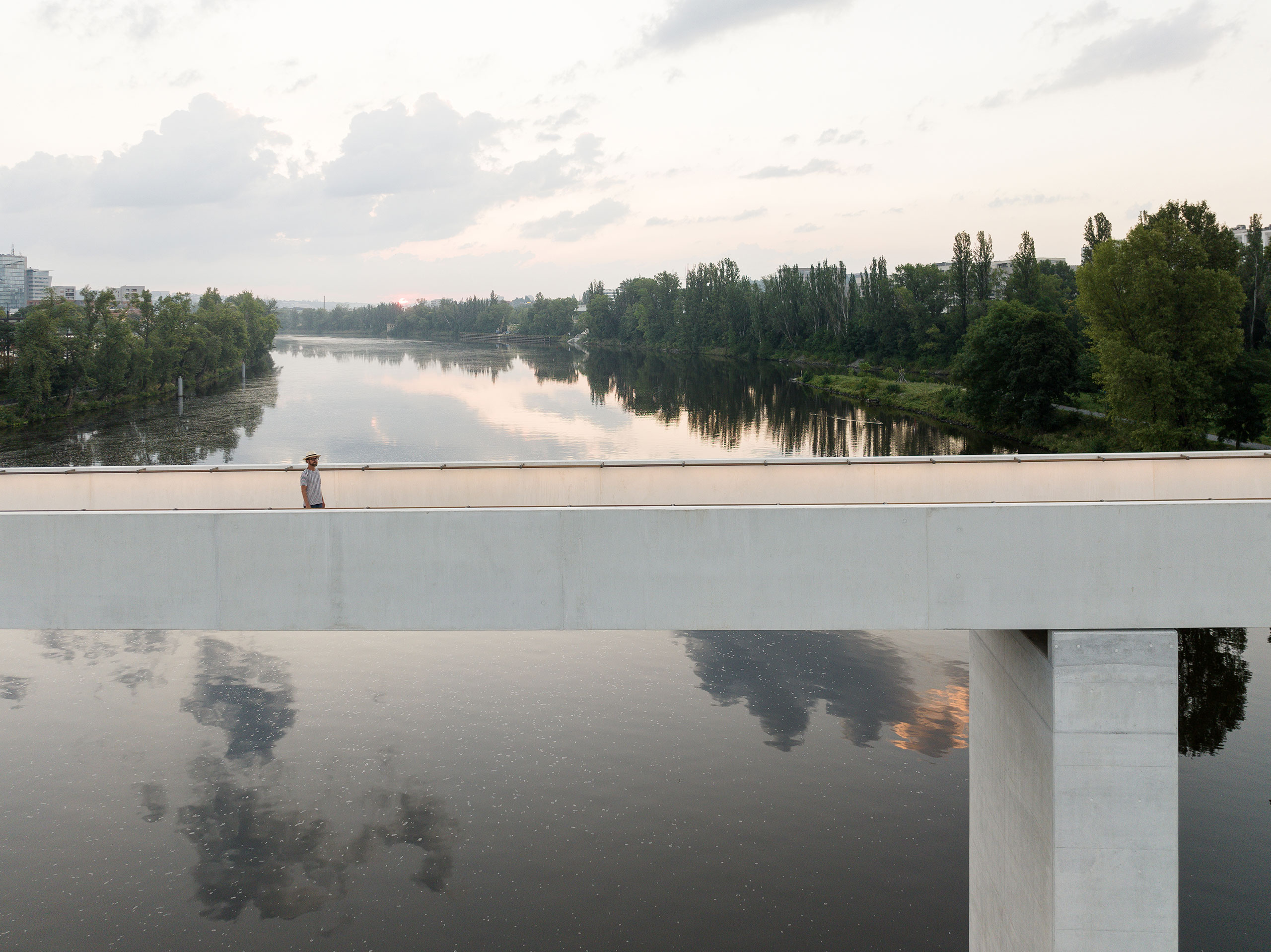
Photography by Alex Shoots Buildings.
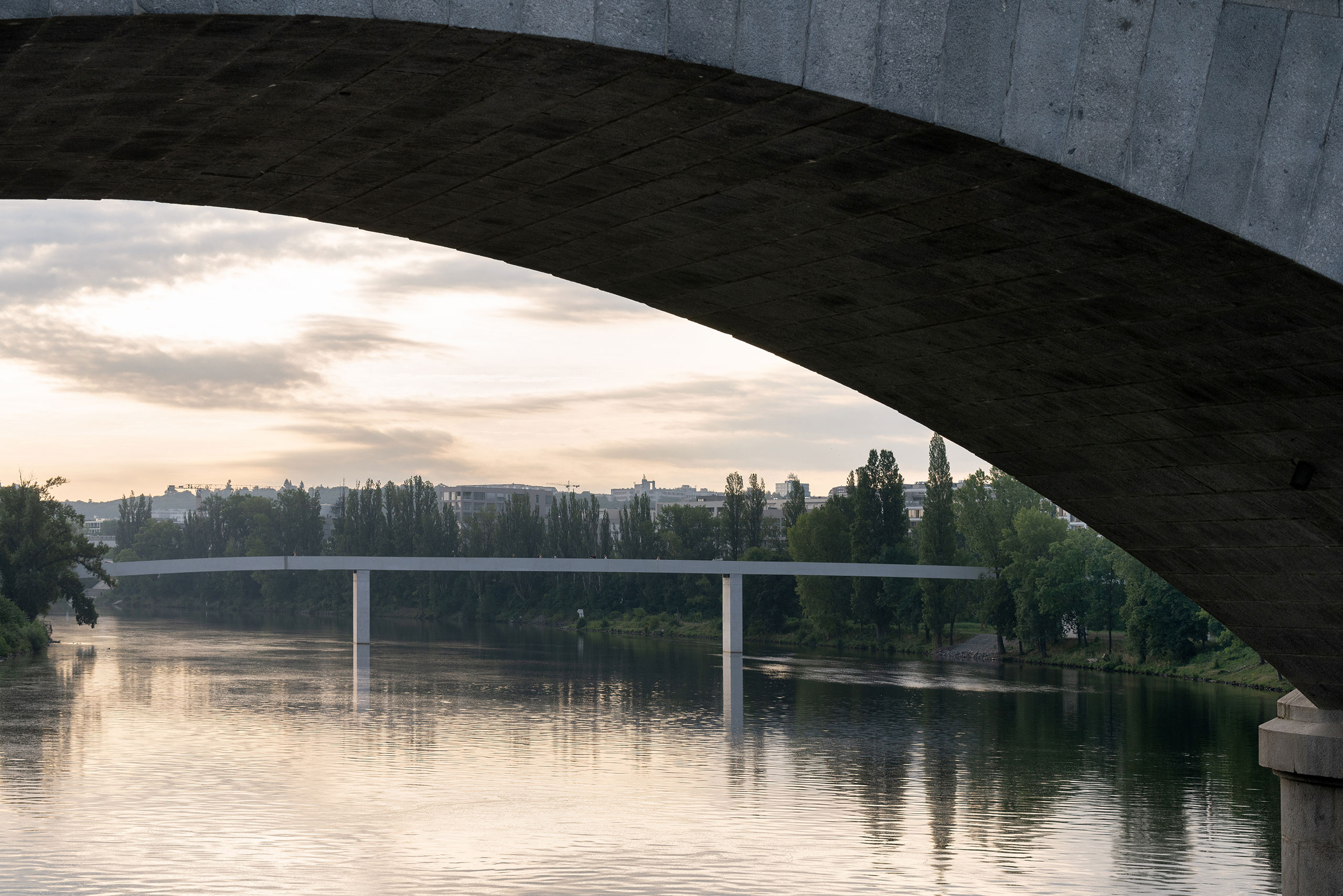
Photography by Alex Shoots Buildings.
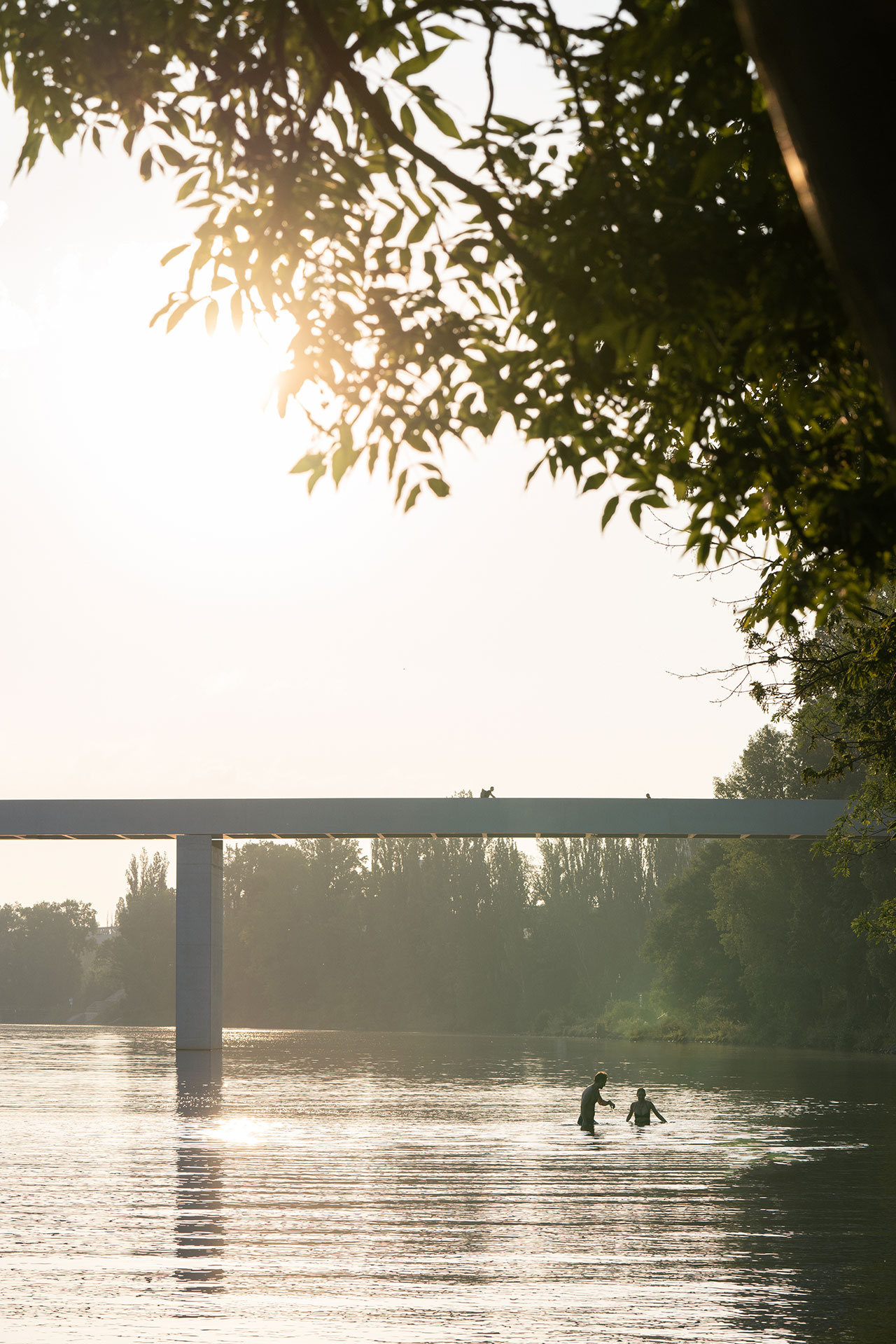
Photography by Alex Shoots Buildings.
Supported by embankment abutments and a series of piers, the bridge’s gently curved footprint responds to the local topography while its modest height ensures that pedestrians and cyclists enjoy views of the city and river. On the Holešovice side, where the riverbank is lower in elevation and thus prone to flooding, the end span is designed to be vertically movable with the help of a hydraulic piston mechanism.
Part of the bridge’s allure is its white colour; made from ultra-high performance fibre reinforced concrete (UHPFRC) in 57 prefabricated sections, it appears as though it has been crafted from shiny white marble. In conjunction with its slender form and monolithic volume, the latter courtesy of solid parapets, the footbridge is imbued with a sculptural quality. An ornamental bronze handrail by the sculptor Aleš Hvízdal with integrated lighting and figural animal motifs at the ends further underlines the structure’s sculptural sensibility as does Jan Hendrych’s The River figural sculpture that marks the ramp to Štvanice island.
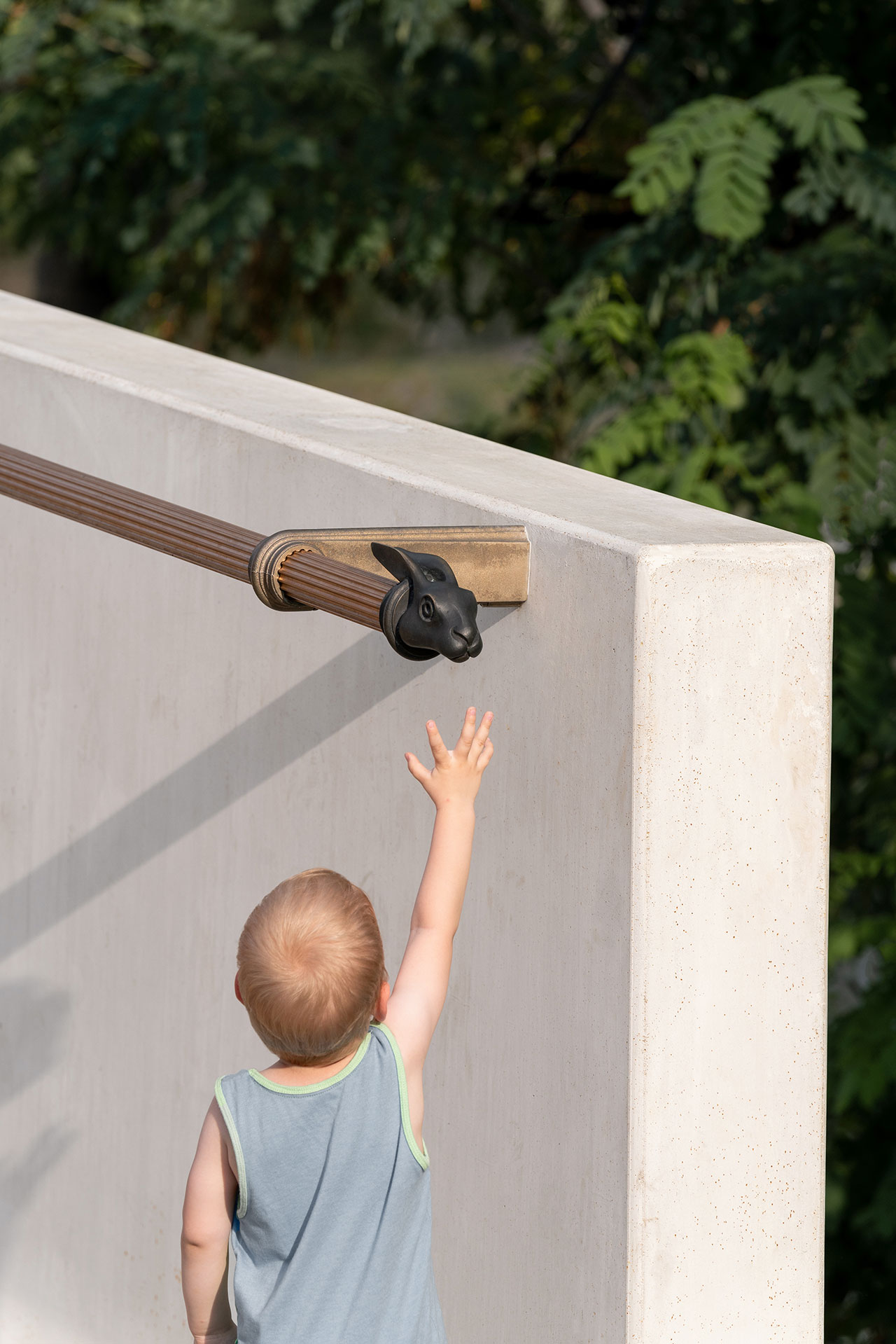
Photography by Alex Shoots Buildings.
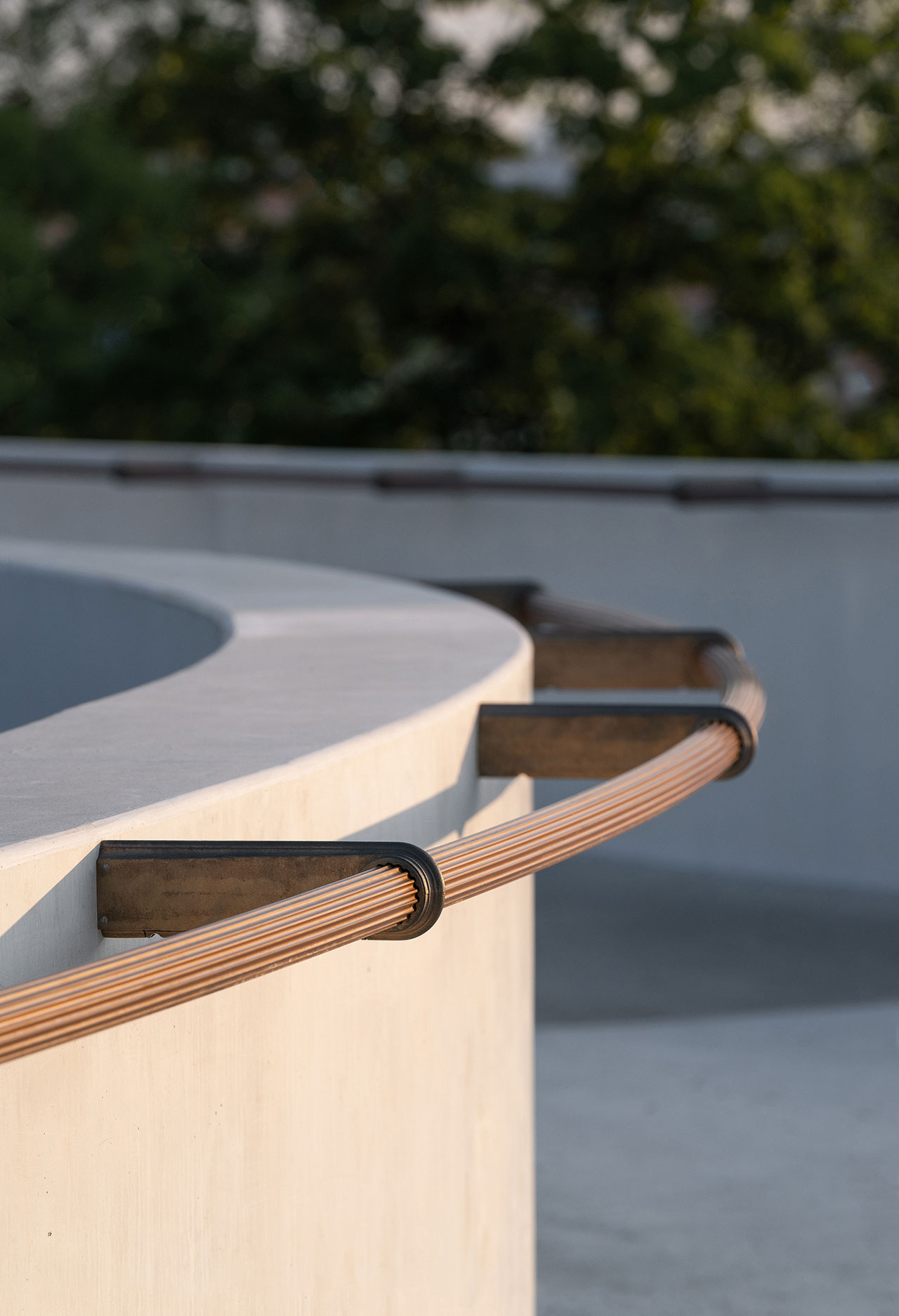
Photography by Alex Shoots Buildings.
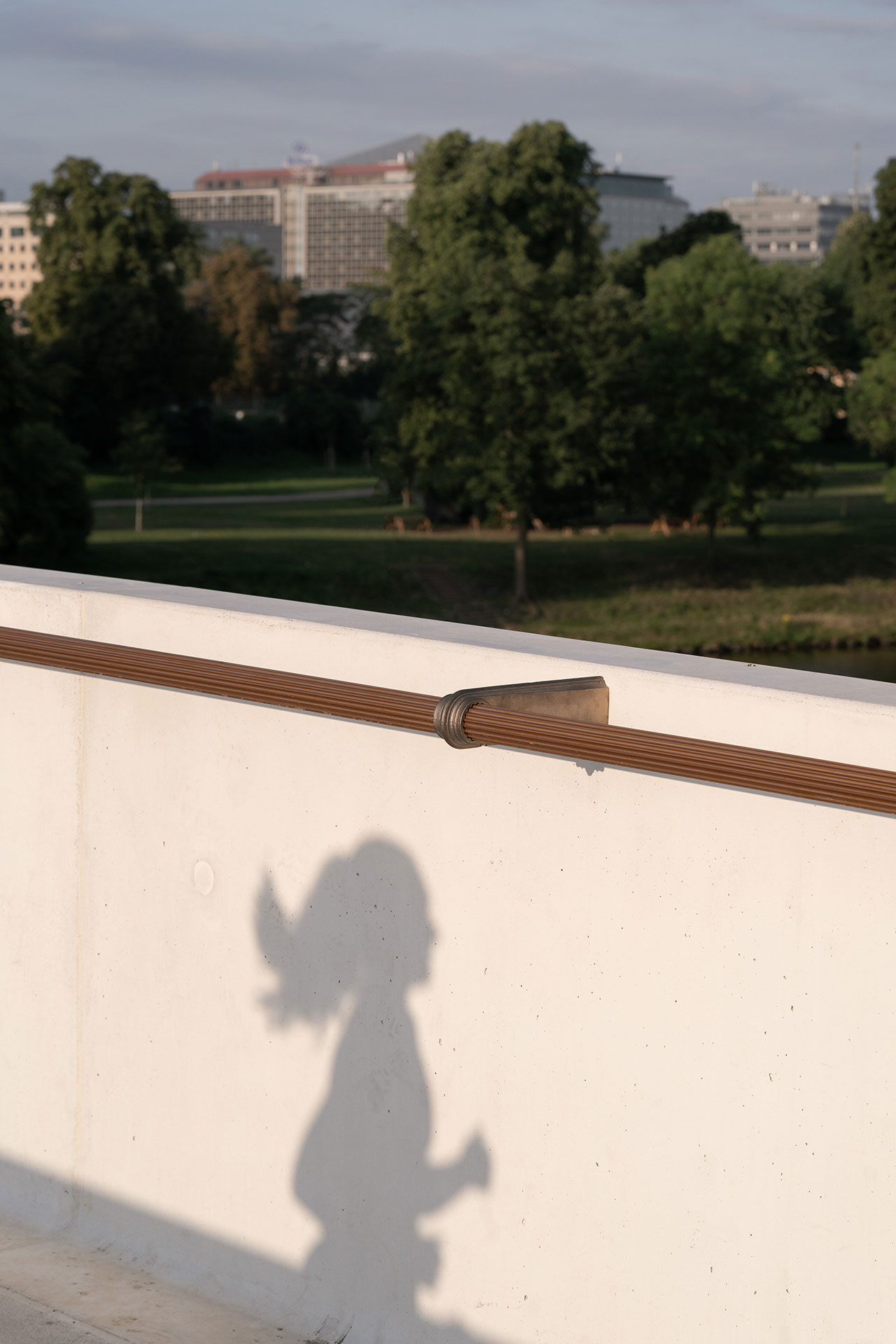
Photography by Alex Shoots Buildings.
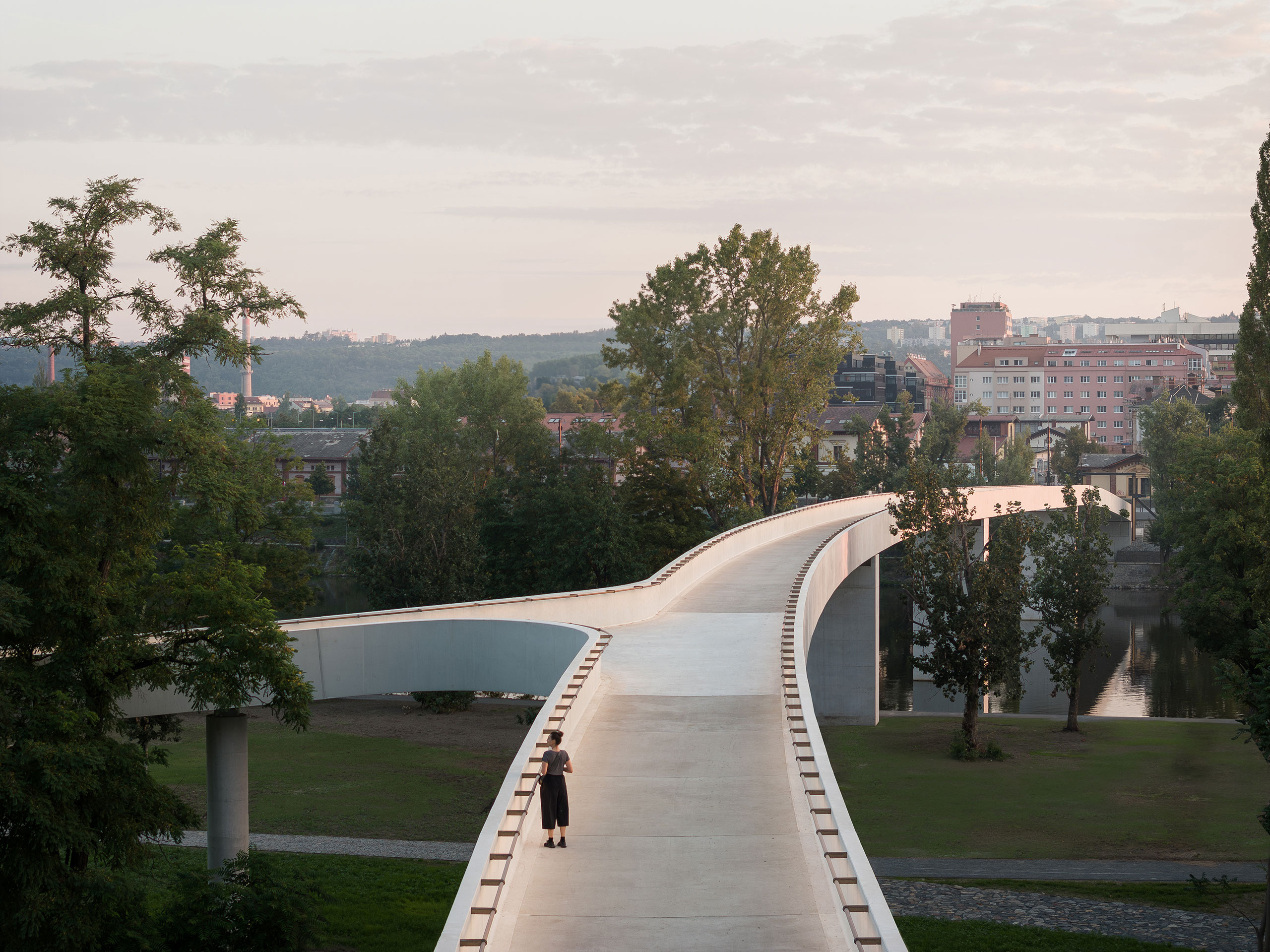
Photography by Alex Shoots Buildings.
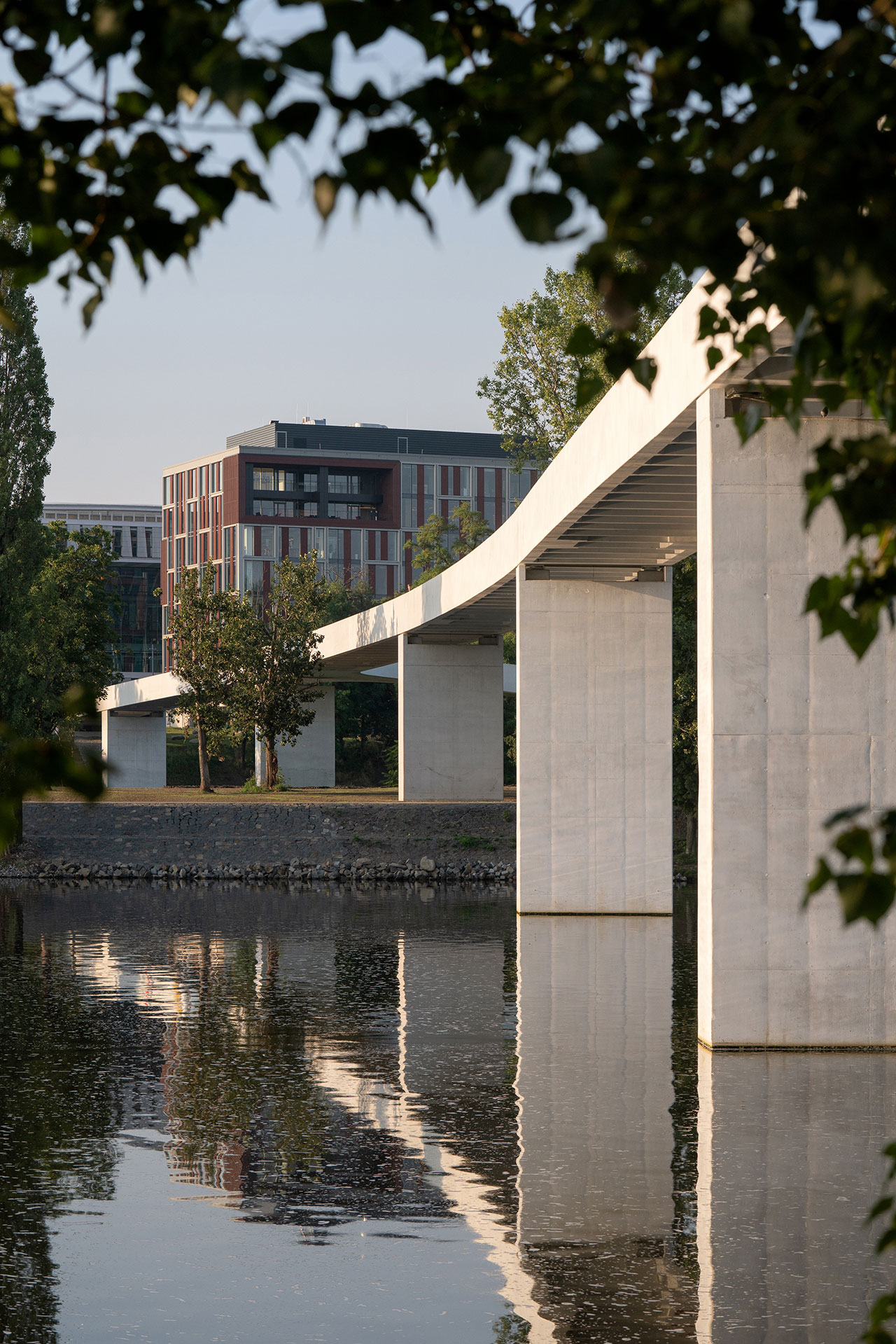
Photography by Alex Shoots Buildings.
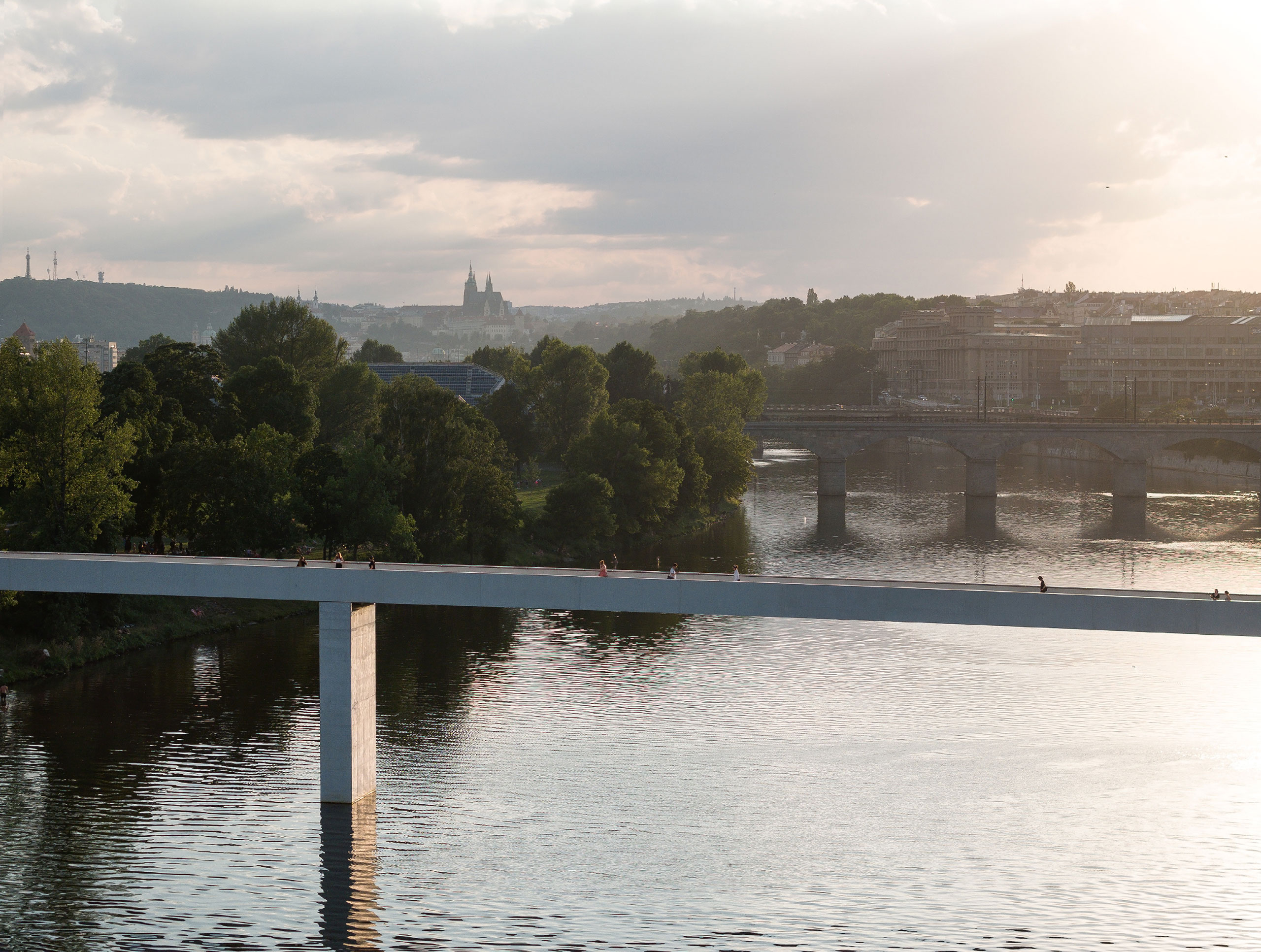
Photography by Alex Shoots Buildings.
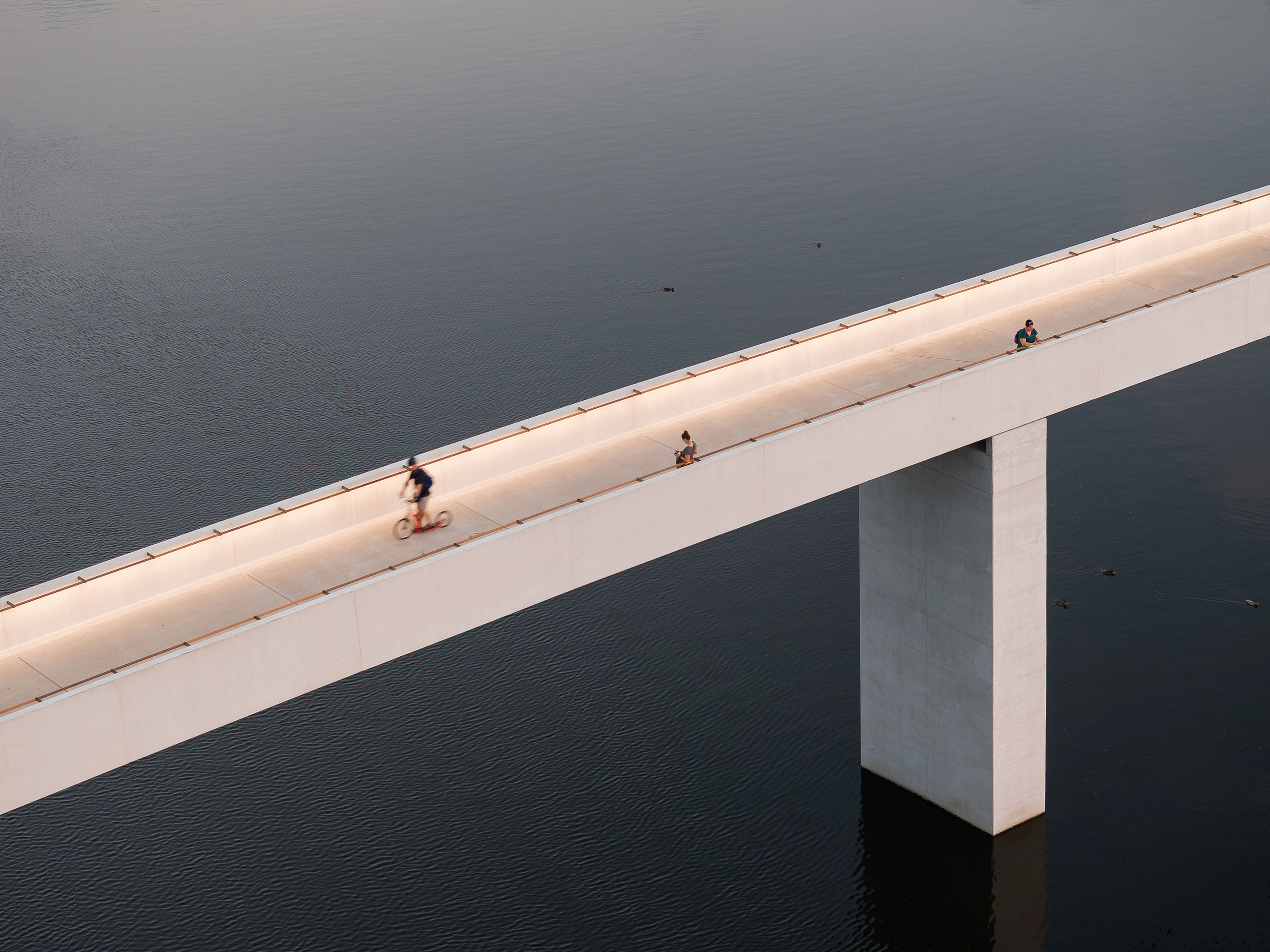
Photography by Alex Shoots Buildings.
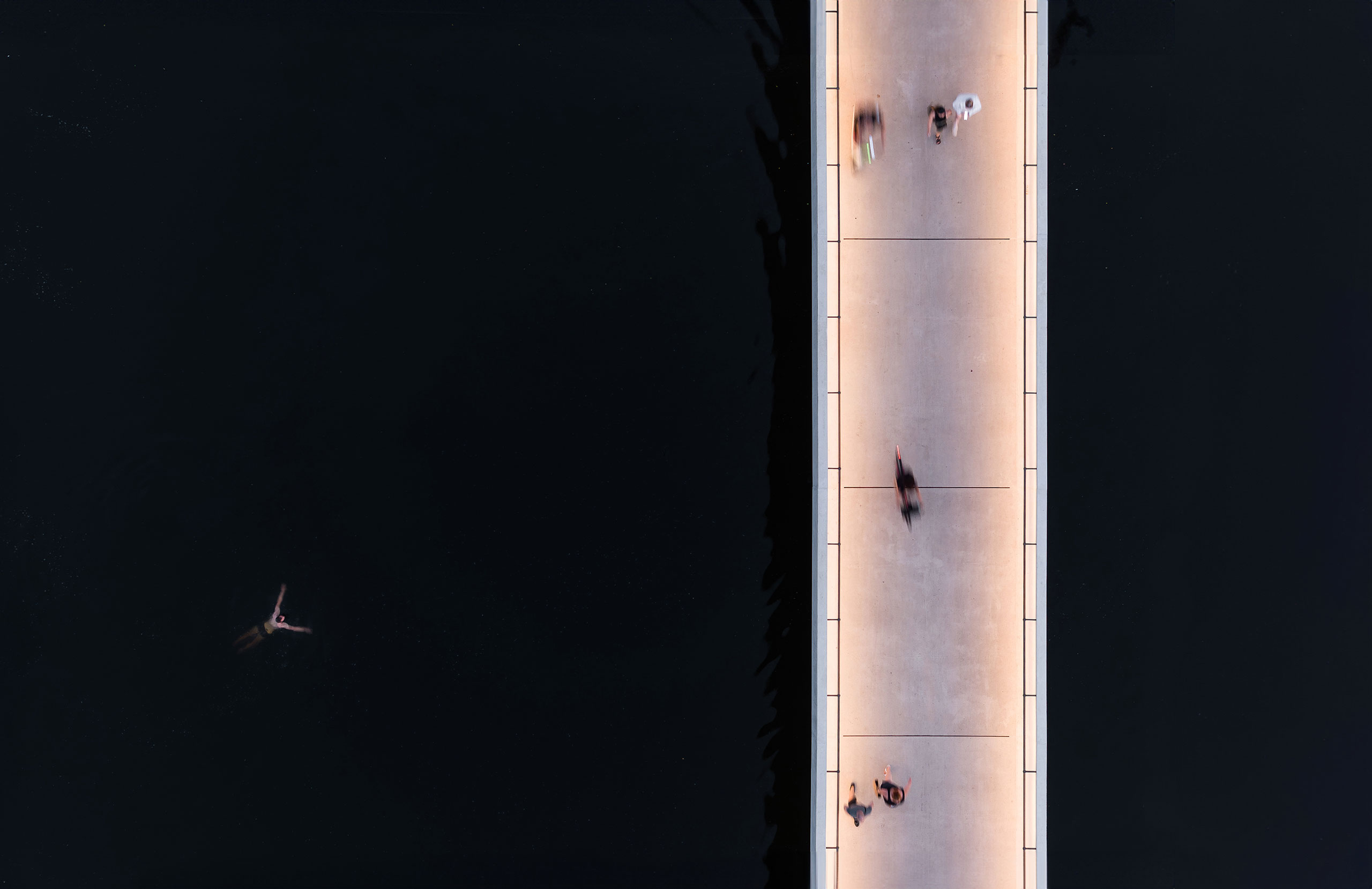
Photography by Alex Shoots Buildings.
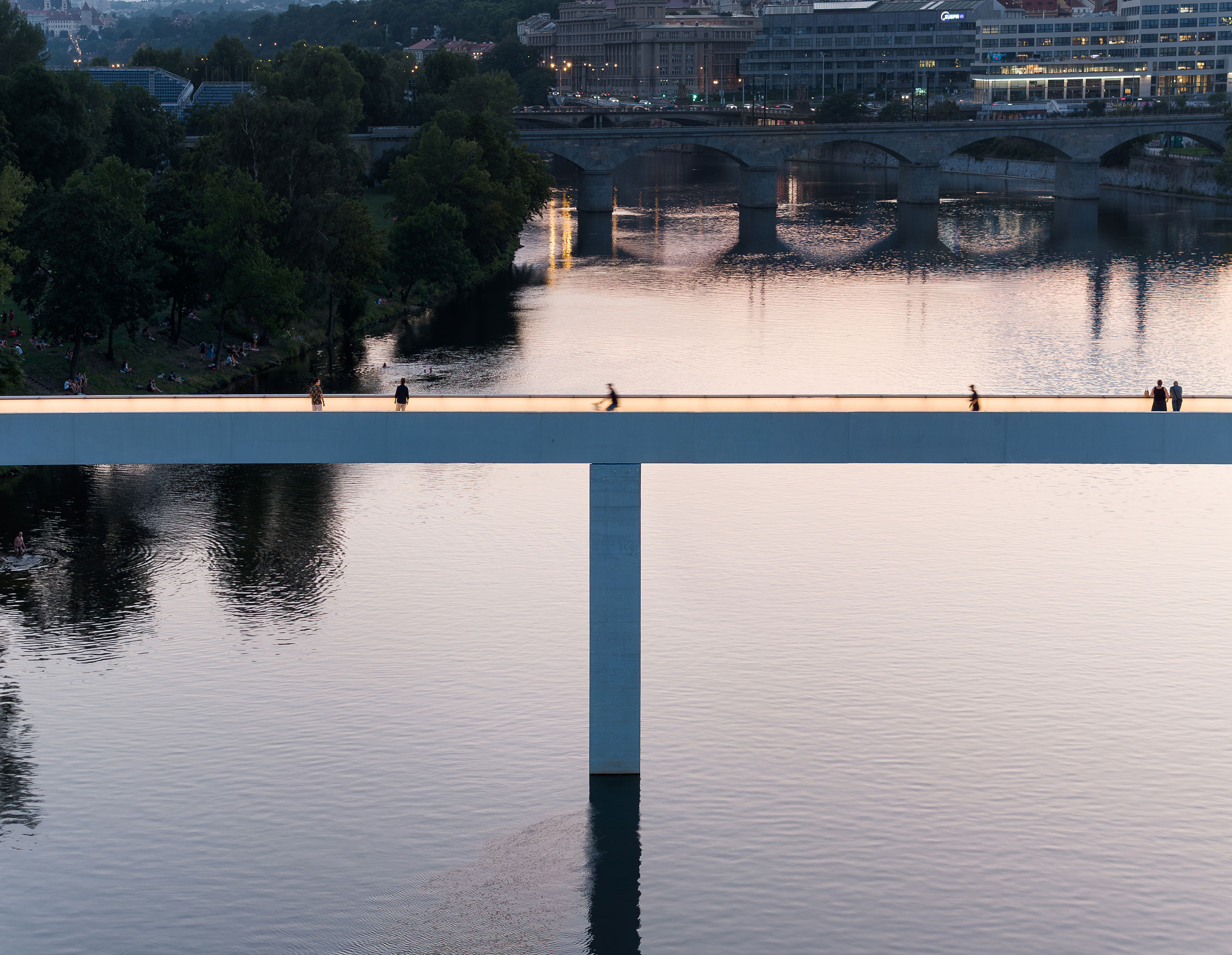
Photography by Alex Shoots Buildings.
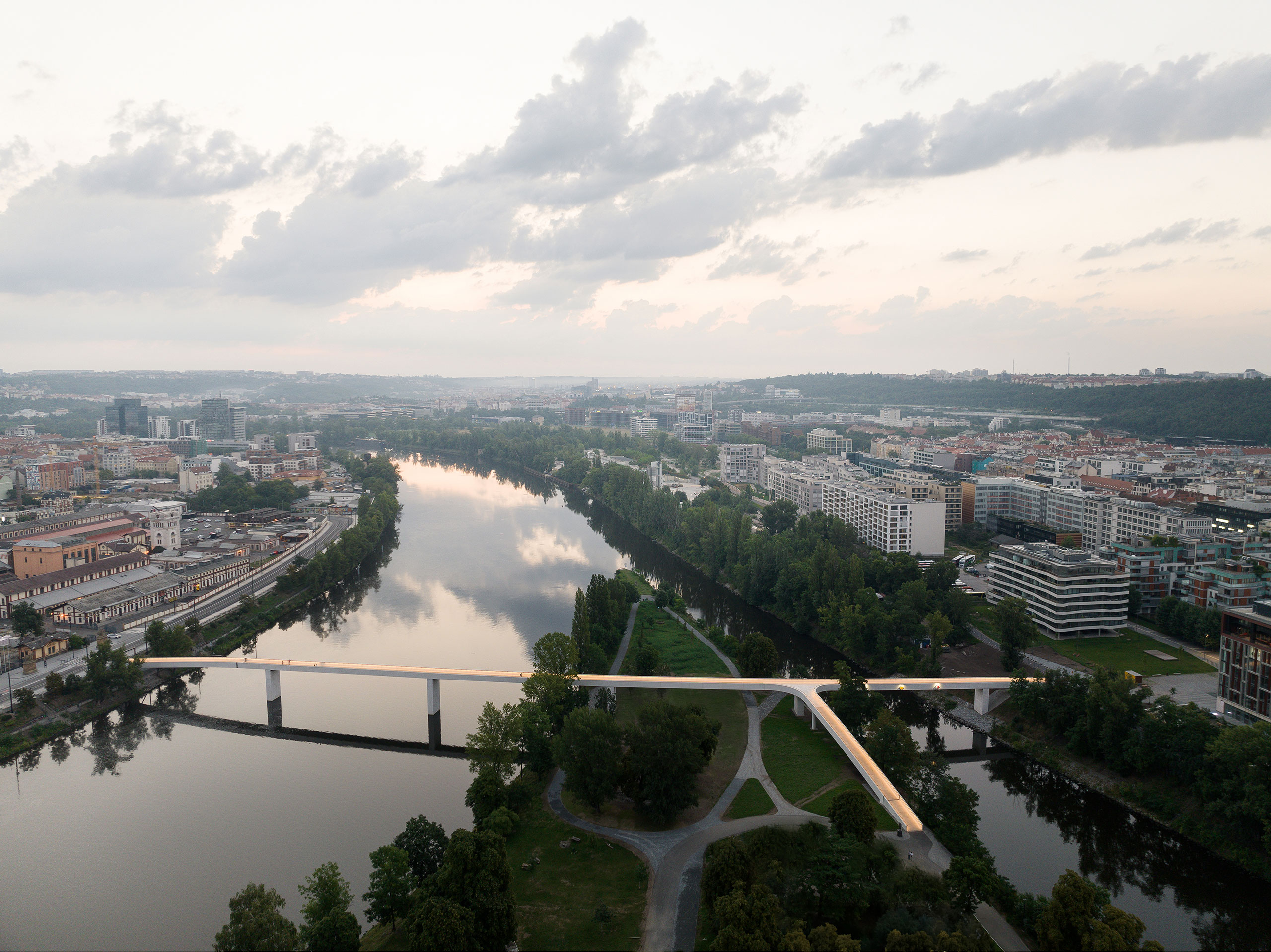
Photography by Alex Shoots Buildings.
